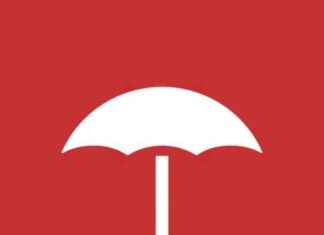Many lawns are brown rather than green this summer. A company from the southwest has developed a curious antidote: a strong green from the spray bottle. The idea of ??painting lawns came from the USA and spilled over to Germany as the drought increased.
grass is green So far, so clear. This summer, however, that is true less and less often. Gardens and parks are often brown and yellow with dead grass and the soil shining through. One could now say: This is what climate change is having. Or you say: That’s not nice. At least the Rilit company from Endingen am Kaiserstuhl has a solution for this: the paint manufacturer sells a special paint that you can use to paint your lawn a bright green.
“So far, the product is not so widely known in Germany,” says sales manager Thomas Urbanczyk Capital. But that’s changing – at least that’s what the increasing sales figures suggest. According to Urbanczyk, despite a fire in production at the beginning of the year, sales increased by 15 percent compared to the previous year – and the trend is continuing. After all, dried out and therefore unsightly lawns will definitely continue to exist in the future. However, the business with the color for lawn and flower plants only accounts for three to five percent of the company’s total business.
Rilit started by coloring flowers with special paints – for example, heather fields are “painted”. It was around 20 years ago that the idea of ??producing paint for dried out lawns was born. A request from France arrived in Endingen near Freiburg. A golf course operator remembered the plant-friendly and degradable flower varnish and thought that it should also be possible with lawns. “Thus, the development of Greengraswater was accelerated on the same basis,” says Urbanczyk. An employee took on the development. The exact composition of the paint is a trade secret. In any case, it shouldn’t harm the plants.
Greengraswater, that’s the name of the lawn color. You can buy the paint in one-liter spray bottles in the online shop, and the paint manufacturer offers canisters with a capacity of up to ten liters for refilling. The company sells 100 tons of vegetable dyes every year. Before applying the paint, you should mask off any surrounding sidewalks and mow the lawn. Then you can spray. “You can also do it yourself,” says Urbanczyk. According to the manufacturer, the paint lasts for three months, after which it has to be sprayed again.
The Endingen-based company sells most of the paints through intermediaries, for example in garden centers. Who ultimately buys the product? It is clear that the customers “value a beautiful lawn”, says Urbanczyk, they are concerned with representation. “The color mimics a green lawn that you don’t actually have.” It’s fair to say that they wanted to suppress the effects of climate change, says the sales manager.
The idea of ??painting lawns came from the USA, more precisely from drought-tested regions like California. From there, the trend found its way via southern Europe to Germany, where drought and water shortages are becoming increasingly important. For several years, municipalities have repeatedly banned the irrigation of private gardens. In midsummer, this would be necessary up to three times a week to keep the lawn lush green.
Thomas Urbanczyk outlines three alternatives: “Either you leave the lawn yellow and withered, or you spray it with our paint every three months, or you water it with a lot of water that may not be available elsewhere”.
Anyone who walks through parks these days will find, for example, that in many places cities and municipalities have opted for the first option. Most parks are a withered yellow. The color provider is increasingly targeting communities for the planned expansion of the business in order to convince them of the possibilities of their green color. That’s not how you stop climate change. But the lawn would be green again.
The article first appeared on Capital.de.






